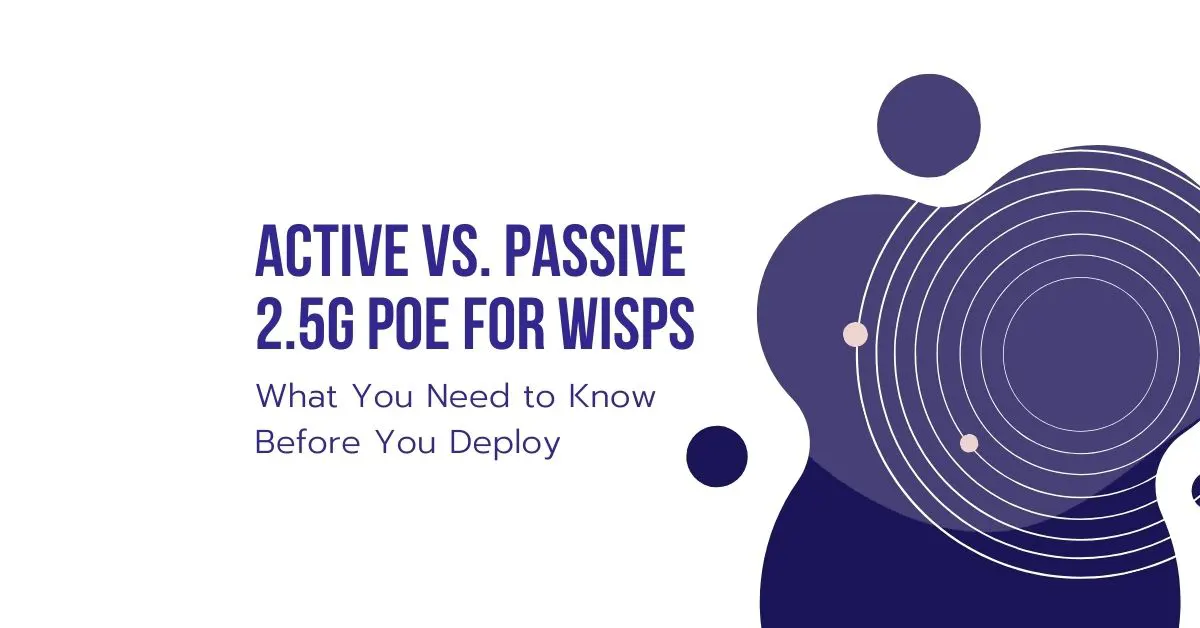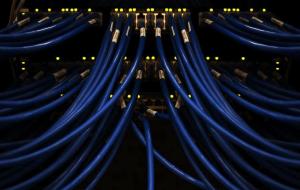As Wireless Internet Service Providers (WISPs) plan or scale their infrastructure, choosing the right Power over Ethernet (PoE) solution becomes critical. With the emergence of 2.5G PoE switches, WISPs now have the opportunity to deliver faster speeds and support more demanding devices without replacing existing cabling. However, one key decision remains: active vs. passive PoE deployment.
In this article, we break down the differences between active and passive PoE for WISPs, explore their technical implications, and help you decide when to use each based on real-world deployment scenarios.
Understanding PoE for WISP Infrastructure
Power over Ethernet enables simultaneous delivery of data and power over the same cable. This is invaluable for WISPs, who frequently install equipment like access points, IP cameras, and backhaul radios in remote or elevated locations.
With the push toward higher throughput and flexible network growth, 2.5G PoE switches are becoming the go-to standard. These switches support 2.5 gigabit speeds over Cat5e or better, allowing WISPs to upgrade bandwidth without massive rewiring projects.
Active PoE: Smart Power Delivery
Active PoE (IEEE 802.3af/at/bt) is standards-based. These switches negotiate with connected devices before supplying power. If a device is not compliant, no power is sent, preventing damage. Use it when:
- You have a variety of devices from different manufacturers.
- You need to scale reliably with predictable performance.
- You’re deploying enterprise-grade access points, VoIP phones, or modern surveillance systems.
Passive PoE: Simple and Affordable
Passive PoE delivers constant voltage over Ethernet without device negotiation. It’s simpler, often cheaper, but comes with risks if used improperly. Use it when:
- Your deployment uses a single type of PoE equipment, such as outdoor radios from one vendor.
- You are building a cost-sensitive solution in a well-controlled environment.
Benefits of Active PoE
- Safe and Intelligent: Ensures only compatible devices are powered.
- Ideal for Mixed Environments: Works seamlessly with a variety of PoE and non-PoE equipment.
- Standards-Based Compatibility: Supports future expansion and multi-vendor ecosystems.
Benefits of Passive PoE
- Low-Cost Option: No handshake mechanism means cheaper hardware.
- Immediate Power: Devices receive power instantly upon connection.
- Great for Uniform Networks: Excellent where all devices are known to be passive PoE-compatible.
Scaling WISP Infrastructure with 2.5G PoE
1. Rural WISP Doubles Backhaul Capacity
A rural WISP needed to boost network performance without tearing up miles of cabling. By upgrading from legacy gigabit to 2.5G PoE switches, they were able to support multi-sector access points, effectively doubling their backhaul speed. These switches worked seamlessly over existing Cat5e cables, saving both time and money.
Why Active PoE Was Chosen:
- Mixed-use deployment included both new and legacy devices.
- Safety and standards compliance were essential.
2. Growing WISP Simplifies Mixed Deployment
A regional WISP added both high-throughput wireless gear and IP cameras to their expanding network. Instead of buying multiple switch types, they chose hybrid 2.5G PoE switches that support both active and passive modes per port.
Results:
- Simplified network planning.
- Reduced equipment costs.
- Future-proofed the infrastructure for continued growth.
Making the Right Choice for Your WISP
When choosing between active vs. passive PoE deployment, consider the following:
- What devices are you powering?
- Is your environment standardized or mixed?
- Do you anticipate scaling or upgrading soon?
- Is safety or cost a greater priority?
If you’re planning for growth, interoperability, and long-term success, active or hybrid PoE switches are usually worth the investment. However, for tightly controlled, cost-sensitive deployments with known equipment, passive PoE may suffice.
Conclusion
Selecting the right PoE strategy can make or break your network deployment. As 2.5G PoE becomes the new standard, understanding how active vs passive PoE affects your infrastructure is essential.
With smart planning and the right switch type, WISPs can scale more efficiently, support more devices, and deliver better performance to customers. Whether you’re deploying in a rural area or expanding a metro footprint, use this guide to make informed decisions that support a resilient and high-performing network.
Upgrade now and prepare your WISP for the future of high-speed networking!



